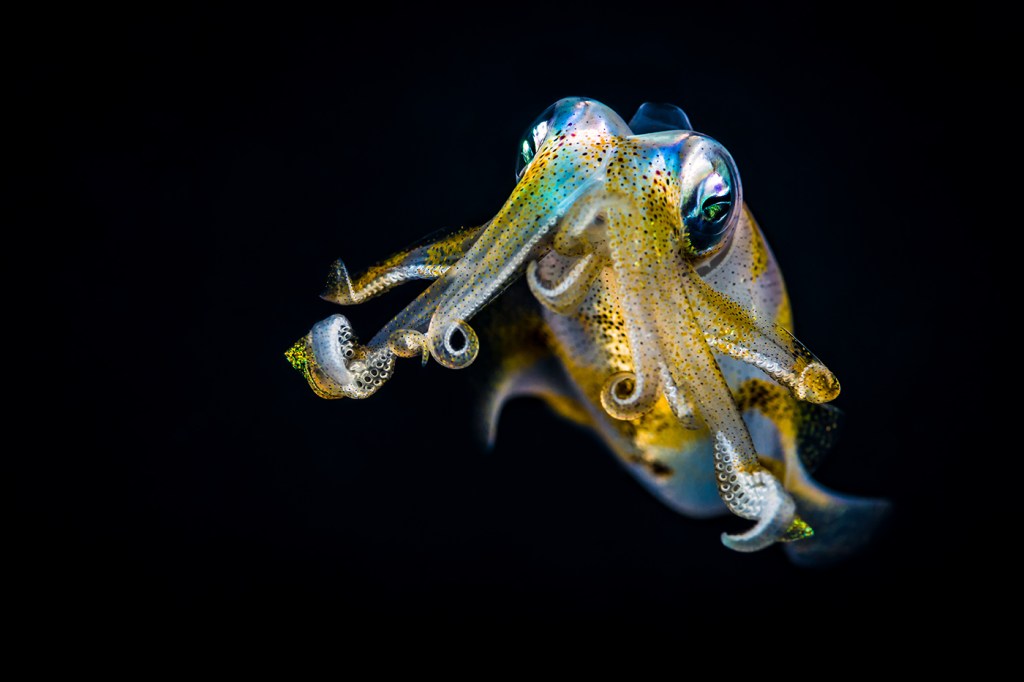What squid neurons and an octopus on ecstasy can teach us about ourselves

Cephalopods—the group of animals that includes octopus, squid, and cuttlefish—are well known for their incredible color-changing abilities. But these tentacled weirdos have also played a vital role in our evolving understanding of the human nervous system.
In honor of #CephalopodWeek, we spoke with Jade Zee, who directs Northeastern’s program in behavioral neuroscience, about what these animals can teach us.
“Among invertebrates, they stand very much apart. They’ve evolved a much larger nervous system,” says Zee. “Their body plan is completely different from ours, but they share many of the same fundamental principles in how the nervous system actually underlies behaviors.”
What have we discovered from studying cephalopods?
Neuroscience has really benefited from cephalopods. The very first action potential, which is the electrical activity of a neuron, was recorded in a squid.

Jade Zee directs Northeastern’s program in behavioral neuroscience. Photo by Matthew Modoono/Northeastern University
We humans have white matter, which causes electrical signals to travel much, much faster in our neurons. Invertebrates don’t have that. So the invertebrate solution, if you want electrical signals travel faster, is to have a wider diameter axon of a neuron.
The very first action potentials were recorded in what’s called the squid giant axon. It’s about a millimeter in diameter, which I know still sounds small, but that’s actually really, really big compared to other nerves.
With the early techniques we had to record electrical activity, it was necessary to find some kind of system where the axon was physically bigger, so you could actually impale electrodes in it and record this electrical activity.
This recording of an action potential in the squid giant axon is pretty fundamental. It’s what I teach in my neurobiology course and in biological psychology.
Why is the axon so big?
If you think in terms of evolution, the behaviors that need to happen fast would generally be escape behaviors. Having this giant axon that was wider and thicker would allow electrical signals to travel faster in their bodies, and that would help them escape dangerous situations or predators.
How are cephalopods used in neuroscience today? Are researchers still studying that axon?
While it might have started out as just a great fundamental system to understand nervous system physiology, it has really branched out, in part because of their complex behaviors, and also because they have very interesting sensory capabilities.
Cephalopods do have a small brain, but their nervous system is not like a central nervous system. The neurons are clustered all over the place, kind of in a network. Those clusters are called ganglia. And from there, they have some independent control of a segment of the body. There are clusters of neurons located out in the arms that are responsible for a lot of the really interesting behaviors and motor control.
And for someone like me, who’s interested in the neural basis of behavior, there’s a lot of sort of quirky stories in the news about how complex their cognitive ability is. I don’t work on cephalopods, but I appreciate them as a neuroscientist.
A study came out last fall where researchers dosed octopuses with ecstasy (MDMA) to see how their behavior would change. What can we learn from studies like this?
The scientists who research this are actually conducting some experiments in the “Neural Systems and Behavior” course I co-direct at the Marine Biological Laboratory in Woods Hole.
We know, with humans, ecstasy promotes what we call pro-social behaviors. Their question was to ask whether or not the same sort of mechanism happens in cephalopods. And that turns out to be the case.
They used a species of octopus that is mostly solitary. When they were treated with ecstasy, they started being less interested in toys and more interested in each other. They were more gregarious. What it actually showed us was that they have a very similar system underlied by serotonin, which is exactly why humans also like MDMA.
MDMA is currently being tested in terms of its potential therapeutic benefits for treating PTSD. It’s useful to know that what’s happening from a neurochemical standpoint in humans is also happening in cephalopods.
For media inquiries, please contact media@northeastern.edu.




